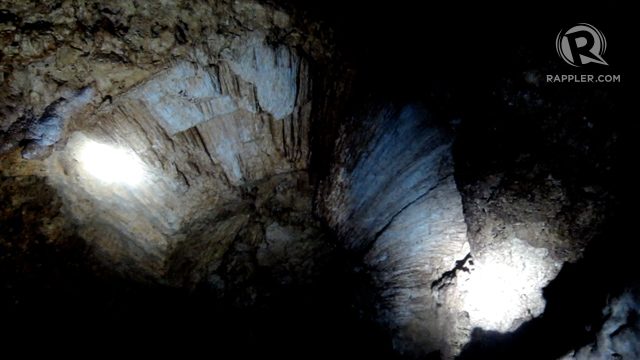SUMMARY
This is AI generated summarization, which may have errors. For context, always refer to the full article.

MANILA, Philippines – The Department of Environment and Natural Resources (DENR) has classified 206 additional caves – paving the way for their conservation, protection, and management by the government as mandated by law.
In a statement Wednesday, April 30, Environment Secretary Ramon Paje said classifying caves can help define which human activities will be allowed in them to “preserve their pristine state, or improve them if necessary.”
“Caves are non-renewable resources with unique, natural features that offer significant scientific, educational, economic and aesthetic value and form part of our historical and cultural heritage,” he added.
Under Republic Act 9072 or the National Caves and Cave Resources Management and Protection Act, DENR is mandated to formulate, develop, and implement a national program for the sustainable management and conservation of caves. (READ: Philippines puts 158 caves under protection)
Most of the newly classified caves can be found in Cagayan Valley (101 caves), with 83 caves in Cagayan province alone.
Cave classifications
There are 3 classification of caves:
1. Class I – caves with delicate and fragile geological formations, threatened species, archeological and paleontological values and extremely hazardous conditions.
There are 21 newly classified caves under Class I, including the Masi Cave in Adams, Ilocos Norte, the Pagulayan Cave within the Peñablanca Protected Landscape in Cagayan, and the Santol Cave in the Island Garden City of Samal in Davao del Norte.
Allowable activities: mapping, photography, educational and scientific purposes
Closed to: ecotourism activities
2. Class II – caves with areas or portions which have hazardous conditions and contain sensitive geological, archeological, cultural, historical, and biological values or high quality ecosystem.
It may be necessary to close these caves seasonally or permanently; otherwise, they may be open only to experienced cagers or guided educational tours or visits. There are 154 newly classified caves under Class II, including the famous Sohoton Cave in Samar. (READ: Pineapples, caves and angel wings)
3. Class III – caves with no known threatened species and archeological, geological, natural history, cultural, and historical values. They may also be used when appropriate for economic purposes such as extraction of guano (bat waste) and collection of edible bird nests.
These caves are safe to inexperienced visitors, provided they are still accompanied by cave guides. There are 30 newly classified caves under Class III, including the Aglipay Cave 5 in the Quirino Protected Landscape, and the Mat-i Cave 2 in Baganga, Davao Oriental. (READ: Spelunking in Sumaguing Cave)
Management plan
86 of these caves – mostly in Cagayan – were assessed and classified by the National Museum for their archaeological or historical value, while 15 in Palawan were classified by the Palawan Council for Sustainable Development.
The country now has a total of 364 classified caves which the government is required to manage and protect.
DENR field offices are in charge of preparing a management plan for ecotourism, scientific, educational, and economic activities. (Photo contest: Take a “Selfie for Biodiversity”)
An approved plan will be implemented by the Protected Area Management Board for caves within protected areas.
For those outside protected areas, implementation will be in coordination with the local government unit and the land owner. – Jee Geronimo/Rappler.com
Add a comment
How does this make you feel?
There are no comments yet. Add your comment to start the conversation.